How real chocolate is made from wet nuts in Venezuela (8 photos)
When you first find yourself in such a damp room, with a very heavy, literally poisonous smell, reminiscent of some kind of torture cellar from thriller films, you will never in your life guess that the future chocolate is actually made here. 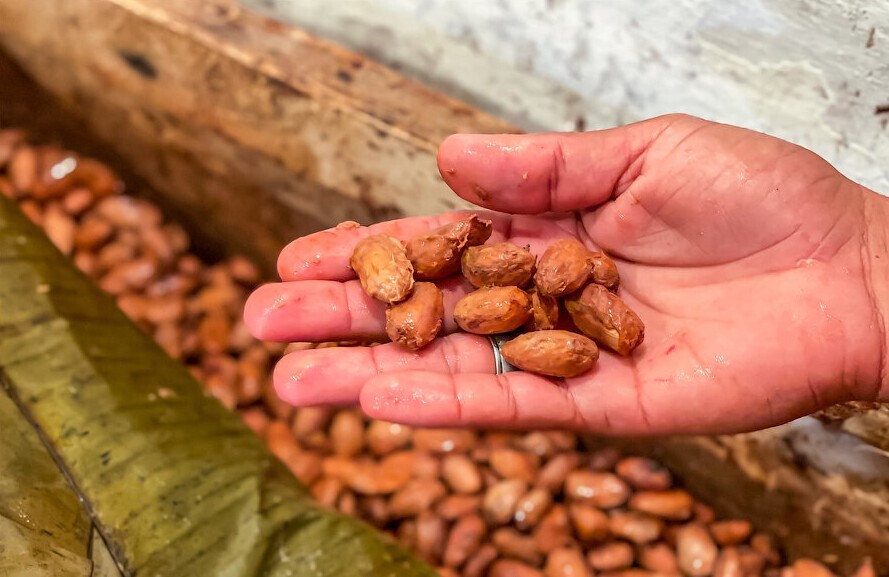
It is so difficult to imagine that all this stench, because of which it is even impossible to take a deep breath, is an indispensable condition for fermentation. During which the slimy grains of cocoa beans will change their taste beyond recognition, in order to then become the chocolate we are all familiar with.
Imagine, the squeamish girls from our company didn’t even want to take these grains into their hands during the fermentation process. But they love chocolate, and two days earlier they filled a bag at Duty Free with their favorite Tubleron... 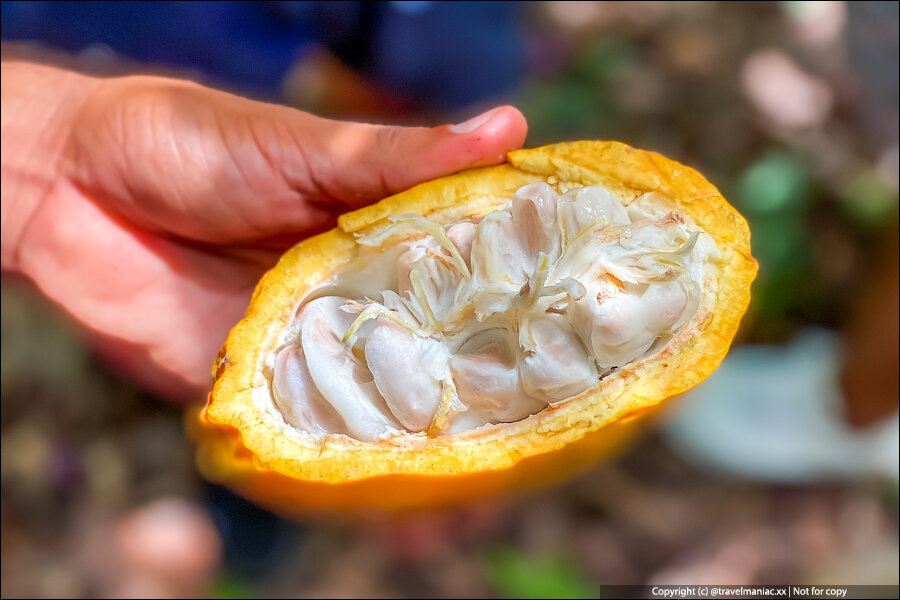
Chocolate begins with these white grains that ripen inside cocoa beans on cocoa plantations.
The harvesters cut them with a machete, then manually free the grains from the skin, and then place the pulp in special wooden boxes or barrels in dark, damp rooms, covered with banana leaves and burlap.
So they lie and sour, burning out all the oxygen in the room for about 10 days. 
The sweet pulp immediately begins to ferment, and the temperature inside the containers with grains rises to 50 degrees, despite the fact that the room itself is cool. For 10 days, cocoa grains ferment and ferment in the resulting “compote”. At the same time, cocoa beans lose their bitterness and it is during this unpleasant process that they acquire the future taste properties, aroma and color of chocolate!
During the fermentation process, the master periodically takes out the grains, splits them with scissors and tastes them, like a winemaker, controlling the fermentation process. 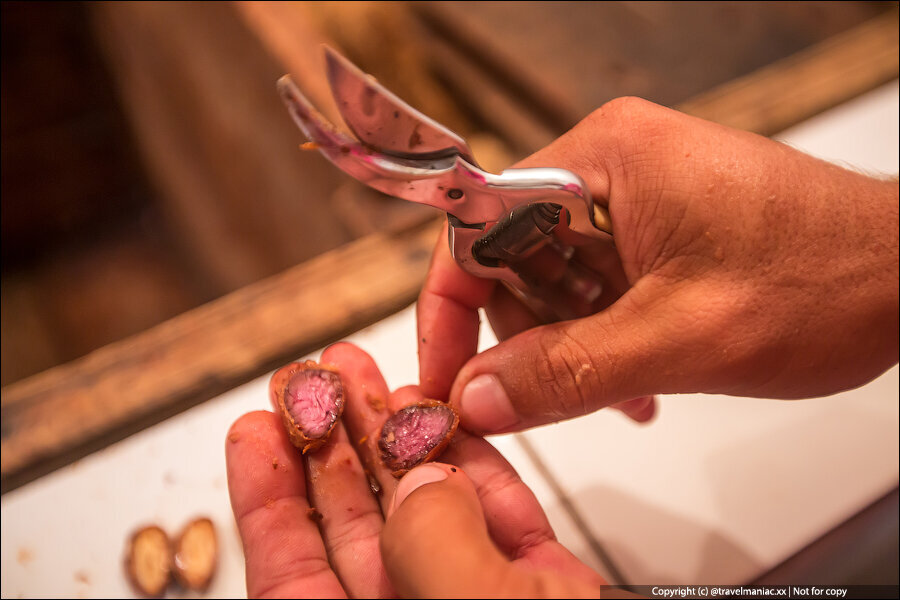
This is what the inside of cocoa grains (future chocolate) look like during the fermentation process. 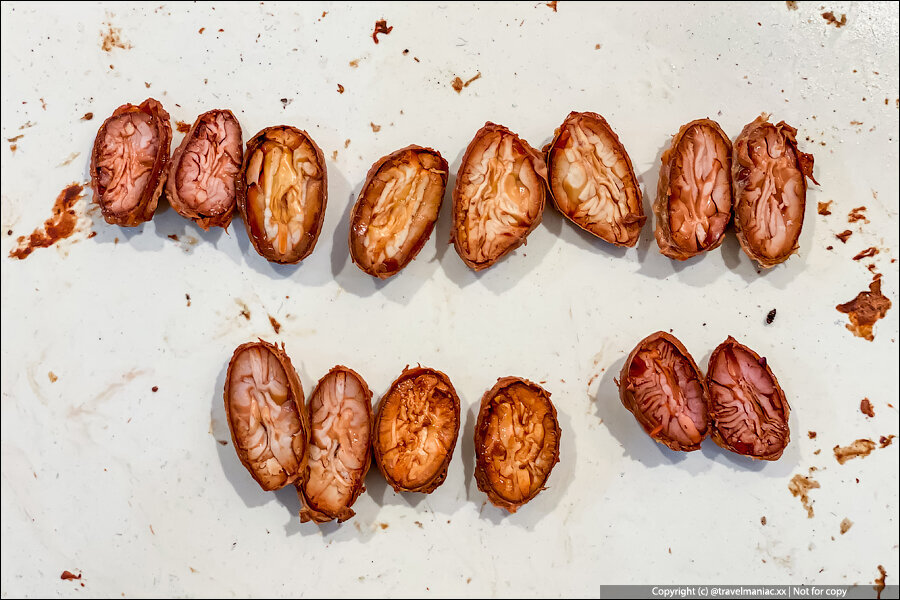
Light color inside is quite rare.
This is a sign of the most elite cocoa varieties. Basically, cocoa beans are dark inside (bottom right) and this is the type of cocoa that is grown in the main exporting countries: Cote’d’Ivoire, Ghana, Cameroon, Nigeria.
At the plantation near Choroni that I visited, they specialize in light cocoa. Although the cocoa powder itself will be the usual color, completely white. We are talking only about a variety that is more elite and expensive. 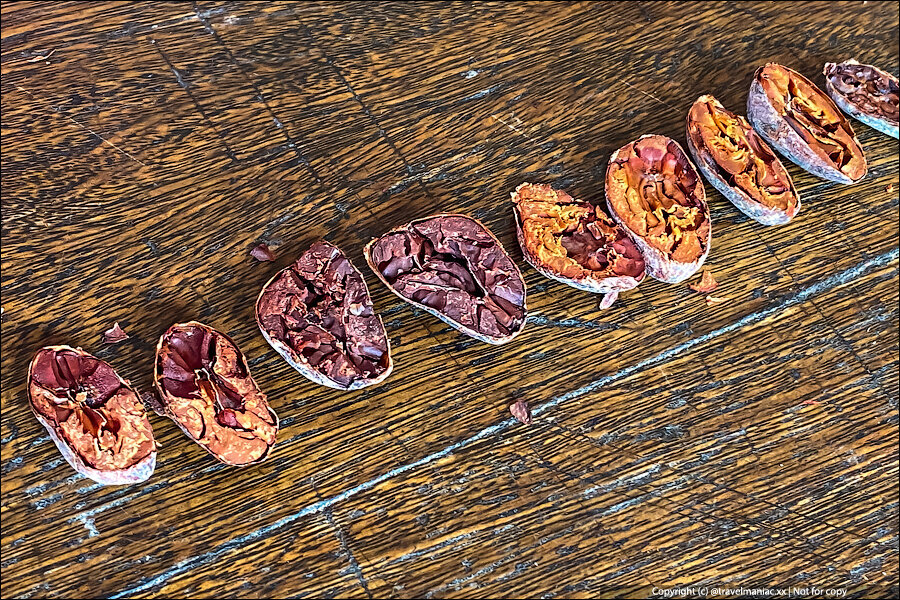
When the master has determined that there has been enough fermentation, the grains are unloaded from the containers into a special yard with a concrete floor.
Here the grains are spread in a thin layer on a heated concrete surface to dry in the sun. 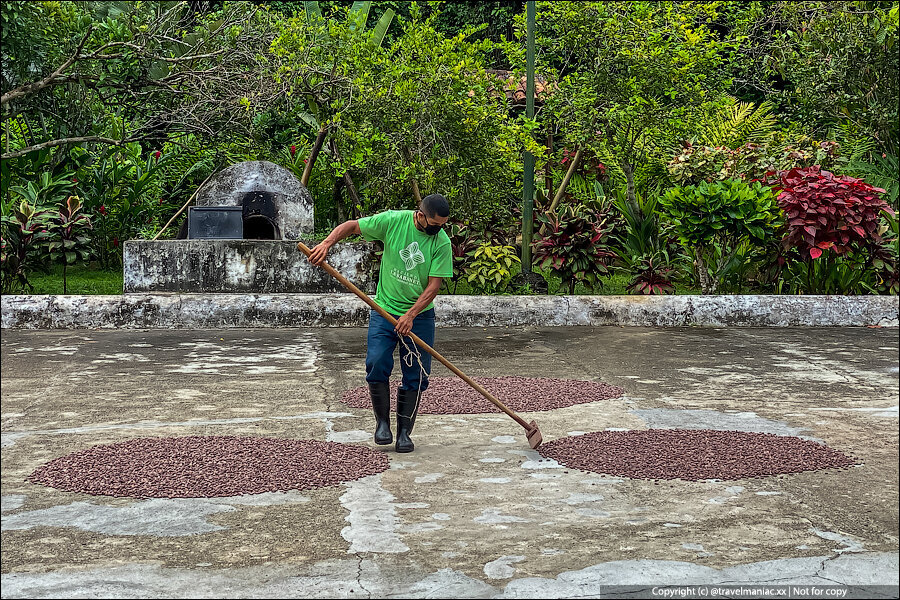
The beans are dried for 6 hours to several days, depending on weather conditions, until they reach a certain moisture level. It is measured with a special device.
But earlier, when there were no instruments yet, humidity was determined by ear, taking several beans in a fist and shaking the fist near the ear, listening to the crackling of the beans hitting each other.
When the beans are ready, they are packed into bags and sent to the customer. 





















